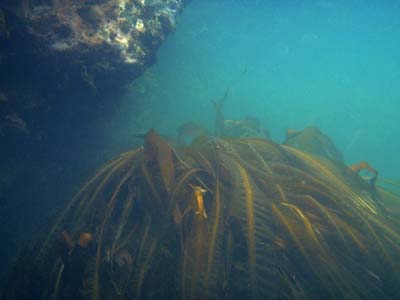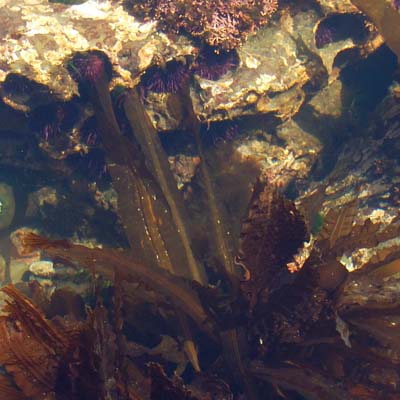
The Unique Kelp
HABITAT
C. triplicata in a pool (Botanical Beach, Vancouver Island, Canada)
Three sea urchins feeding on C. triplicata (Botanical Beach, Vancouver Island, Canada) |
|
Website created by: |
1) Roland, W. G. 1984. Resource management biology for the edible kelp Cymathere triplicata. Can. J. Fish. Aquat. Sci. 41:271-277.
2) Griggs, Robert F. 1907. Cymathere, a kelp from the western coast. The Ohio Naturalist 7,5:89-96.
All photos taken by Andrea Dingeldein unless otherwise noted and are not to be reproduced without proper credit given to the photographer.

